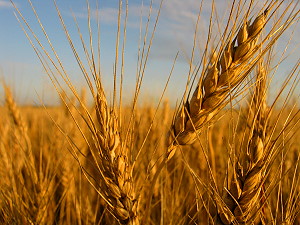 Northwest Region Crop Report Prepared by: Manitoba Agriculture, Food and Rural Initiatives GO Teams & Crops Knowledge Centre August 19, 2013 |
Northwest Region Crop Report Prepared by: Manitoba Agriculture, Food and Rural Initiatives GO Teams & Crops Knowledge Centre August 19, 2013 |
Northwest Region
Towards the weekend, sunny and above seasonal average temperatures were general throughout the Northwest Region. Minimal accumulation of precipitation was recorded for the week. On Sunday in the central sector, a few isolated thunderstorms with some hail caused limited crop damage and lodging. However, up to 100% crop damage has been confirmed in the Minitonas area from a localized hail storm on August 6.
The warm temperatures under adequate moisture have increased crop development and onset of cereal crop ripening stages. Overall crop conditions are rated at 85% good to fair; early season excess moisture impacted areas are rated fair to poor. Approximately 60% of barley and oats acres are at dough stages while 85% of spring wheat acres are at the dough stage with 5% rated as mature. Combining of winter wheat and fall rye has just begun and general harvest is expected next week. Canola acres are 85% fully podded, 5% is ripe and the remaining acres are at various stages of flowering. Soybeans development is variable; the Ste. Rose area is generally more advanced with good pod set and seed fill. Some soybean fields through the Grandview area are showing good stand length but pod set and seed development is poor and at earlier reproductive stages. Combining of forage seed perennial rye grass has been general.
Sclerotinia is becoming visually evident in fields as the canola crop matures. Insect pressure remains low and generally is not a major concern in the area. Early season herbicide application challenges, including moisture, weather, field access, and timing issues, has resulted in higher weed pressure in more fields than normally seen. In addition to more wild oats and a variety of broadleaf weeds, high populations and frequency of barnyard grass is especially evident.
First cut haying operations are mostly complete. Yields are average to below average and forage quality has remained variable. A limited amount of second cut forage harvest is underway. The native hay harvest continues as more fields become accessible; yields are average to below average. Wet and inaccessible native hay lands remain through the Westlake area, as well as other pockets throughout the northernmost sectors of the region. Pastures are rated as fair to good in most areas. Dugout water levels are full in all areas.
